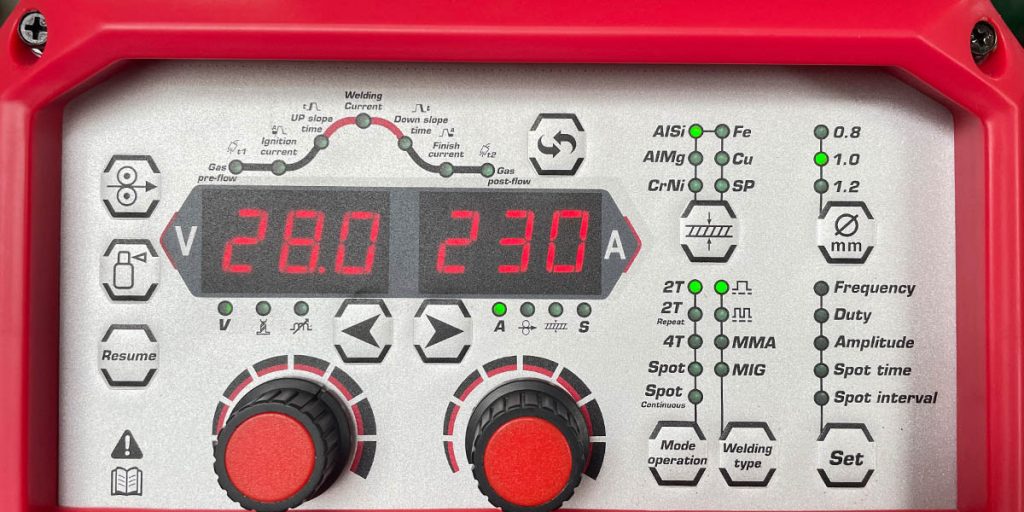
If you’re new to Pulse MIG welding, you may be wondering about the different parameters and adjustments involved. Here are the main components of the Pulse MIG weld cycle and their associated adjustments: Note that most reputable Pulse MIG machines have synergic control, where the Volts and Amps/Wire Speed are adjusted together automatically. For simplicity, we will refer to these collectively as “Current.”

- Start Current: The current level at the start of the weld is usually set as a percentage of the main current. When welding aluminum, the start current is typically higher than the main current to help break through the oxide layer for a clean start to the weld.
- Start Current Time: The duration of the start current.
- Main Current: The main welding current/amps.
- Secondary Current: Also known as Background Current, this applies to double-pulse only. Usually set as a percentage of the main current. Typically, this will be lower than the main current for a cooler weld pool.
- End Current: The current level at the end of the weld, is usually set as a percentage of the main current. Typically, this will be lower than the main current. End Current and End Slope work together to prevent/minimize ‘craters’ for a clean and aesthetic finish to the weld (also known as crater fill).
- End Current Time: The duration of the end current.
- Start Slope Time: The duration of the gradual change in output from the start current to the main welding current.
- End Slope Time: The duration of the gradual change in output from the main welding current to the end current.
- Pulse Frequency: Used in double-pulse only. Adjusts the pulse ‘cycle’ (main current pulse, followed by secondary current pulse) frequency in Hz (cycles per second).
- Pulse Balance: Used in double-pulse only. Adjusts the length (%) of the main current pulse within each cycle. Increasing this percentage means the main pulse will be longer and the secondary pulse will be shorter. Typically, the main current setting will be higher than the secondary current, in which case increasing the balance percentage will increase ‘heat.’
- Arc Length (also known as arc control or trim): Adjusts the distance from the end of the wire to the weld pool. If the arc length is too short (longer wire stick out), the arc will be very ‘crackly’ and produce a lot of spatters. If it’s too long, this can make the weld black and cause porosity.



